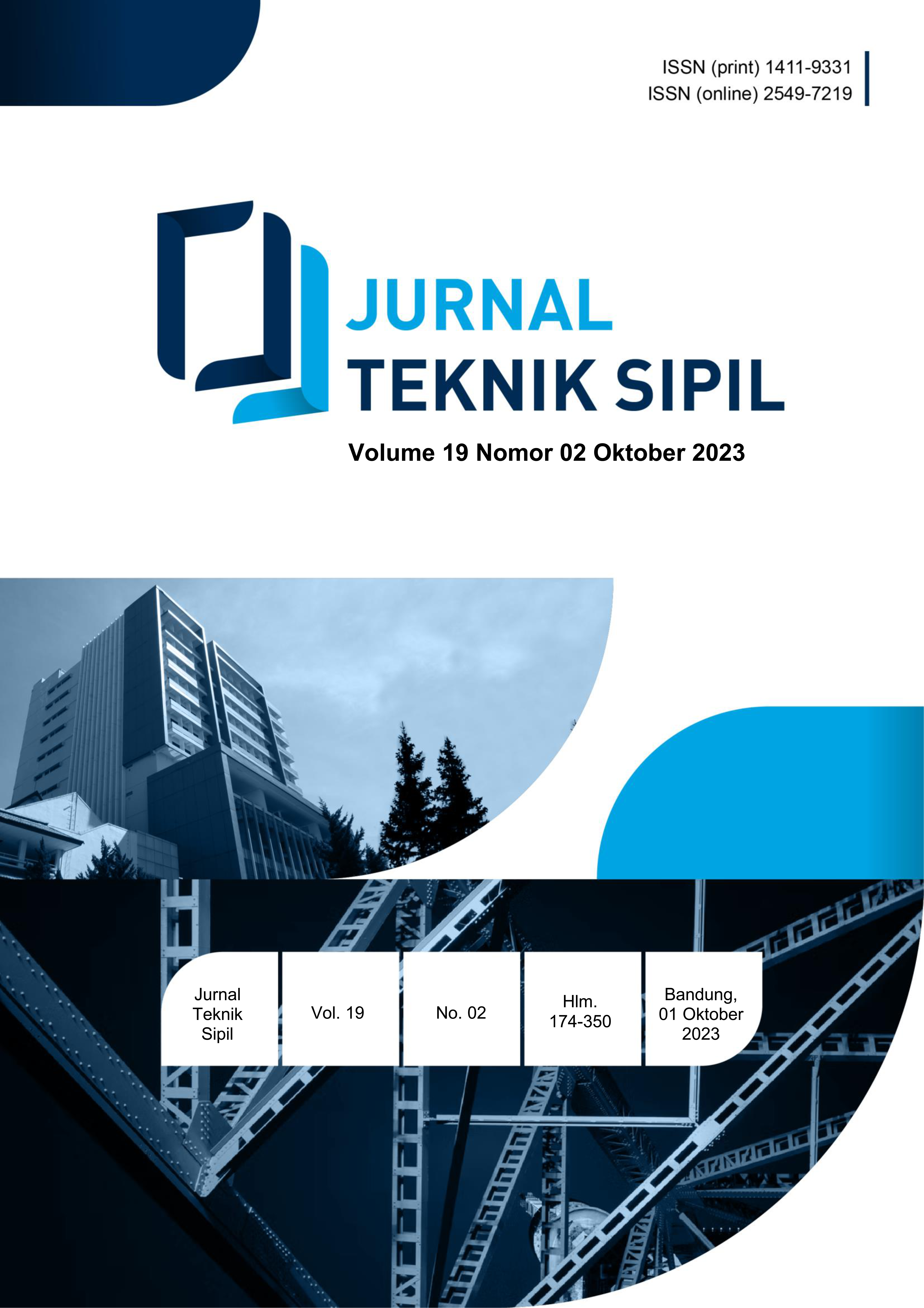Effect Of Waste Bricks On The Compressive Strength of Concrete
DOI:
https://doi.org/10.28932/jts.v19i2.6176Abstract
Brick is a common building material used by the community to make a building. However, not all of these bricks can be used if they do not match the size or are cracked or broken so that they become waste and cannot be recycled. This often happens and is left alone by the community so that sometimes it accumulates or is used as stockpile material. Therefore, it is necessary to research how the bricks that have become waste can be reused to be a substitute for fine aggregate in fc'20 quality concrete. The research was conducted at the Civil Engineering Laboratory of Bung Hatta University by experimenting with the design of fc'20 concrete mixtures with applicable standards. The variations in the design of the stone waste mixture were 0%, 13%, 14%, 15%, 16% and 17%. The compressive strength test for the quality of fc'20 was carried out at the age of 7 days, 14 days and 28 days. The results showed that at 7 days of age with 0% brick substitution, the concrete compressive strength was 13.16 MPa and 13.59 MPa at 14 days. It is estimated that at the age of 28 days it will produce a compressive strength of 20.90 MPa, successively with the composition of a mixture of bricks at 13%, 14%, 15%, 16% and 17% at the age of 7 days to produce a compressive strength of 13.59 MPa,13, 59 MPa, 14.58 MPa, 13.02 MPa, and 12.60 MPa. At the age of 14 days the compressive strength was 17.96 MPa, 18.12 MPa, 20.24 MPa, 19.82 MPa, and 19.25 MPa. At the age of 28 days, it is estimated that the compressive strength for fc'20 is 20.59 MPa, 23.00 MPa, 22.52 MPa, 22.84 MPa and 21.87 MPa. Based on these findings it was concluded that waste bricks can be used as a substitute for fine aggregate in the manufacture of concrete with the optimum composition at 14%. A mixture of brick waste that is still feasible to produce quality fc 20 concrete at a composition of 13%, 14%, 15% and 16%Downloads
References
Alfiqry. (2019). Pengaruh Penggunaan Limbah Batu Bata Terhadap Kuat Tekan Beton.
Asroni. (2010). Balok dan Pelat Beton Bertulang. Yogyakarta: Graha Ilmu.
Elianora. (2010). Variasi Tanah Lempung Tanah Lanau dan Pasir Sebagai Bahan Campur Batu Bata. Jurnal Teknobiologi.
Indonesia, K. B. (n.d.). Pengertian Semen.
Mulyono. (2003). Teknologi Beton. UNJ.
Nurlina, S. (2014). Pengaruh Penggunaan Limbah Batu Bata sebagai Semen Merah Terhadap Kuat Tekan dan Kuat Tarik Mortar. Jurnal Rekayasa Sipil.
Permatasari, S. (2019). Pengaruh Bahan Tambah Batu Bata Merah Terhadap Kuat Tekan Beton Fc'21 Menggunakan Agregat Kasar PT.AMR dan Agregat Halus Desa Sunggup Kota Baru.
Priyono, S. A. (2021). Limbah Bata Ringan untuk Bahan Campur Agregat Halus Terhadap Kuat Tekan Pada Beton K-250.
SNI-03-6820-2002. (2002). Speksifikasi Agregat Halus Untuk Pekerjaan Asukan dan Plesteran dengan Bahan Dasar Semen.
SNI-03-6861.1-2002. (2002). Persyaratan Air Untuk Campuran Beton.
SNI-15-2094-2000. (2000). Batu Merah Pejal untuk Pasangan Dinding.
SNI-1970:2008. (2008). Cara Uji Berat Jenis dan Penyerapan Air Agregat Halus.
SNI-1974:2011. (2011). Tentang Tata Cara Uji Kuat Tekan Beton dengan Benda Uji Silinder.
SNI-2049:2015. (2015). Semen Portland.
SNI-7656:2012. (2012). Tata Cara Pemilihan Campuran untuk Beton Normal, Beton Berat dan Beton Massa.
Sukirman. (2003). Beton Aspal Campuran Panas. Bandung: Grafika Yuana Marga.
Syarif, A. (2016). Analisa Uji Kuat Tekan Beton dengan Bahan Tambahan Batu Bata Merah. Jurnal Konstruksi STT Garut.
Tjokrodimuliyp. (2007). Teknologi Beton. Universitas Gadjah Mada.
Downloads
Published
How to Cite
Issue
Section
License
Copyright (c) 2023 Hanifah Yulian, Nasfryzal Carlo, Indra Khaidir

This work is licensed under a Creative Commons Attribution-NonCommercial 4.0 International License.















